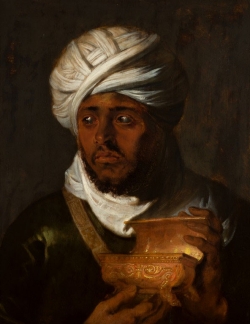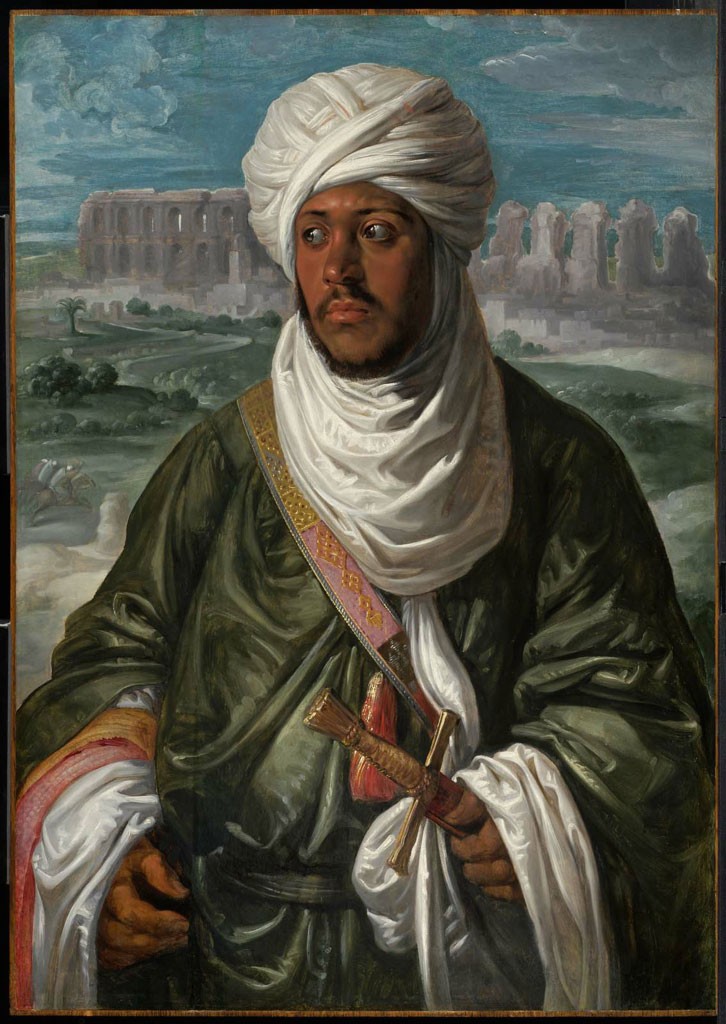As early as the 10th century, biblical commentaries suggested that one of the Magi came from Africa. In art, however, the African king first appeared around the beginning of the 15th century, becoming nearly ubiquitous by the early 16th. He usually is portrayed as the youngest king and associated with the gift of myrrh.
An aromatic resin extracted from Cammiphora trees that grow in North Africa and the Middle East, myrrh is, like frankincense, burnt as incense. But more significantly for the story of the Magi, it was used in biblical times to anoint the dead, and thus seen as foreshadowing the death of Christ. Indeed, the Gospel of John reports that Jesus was buried with myrrh in accordance with Jewish burial customs. Rubens’s king opens the lid of a small chest that recalls a sarcophagus, revealing a glow of light that hints at Christ’s resurrection. The gift of myrrh thus proclaims the central tenet of Christianity: the mystery of Jesus’s death and resurrection and, therefore, his divinity.



